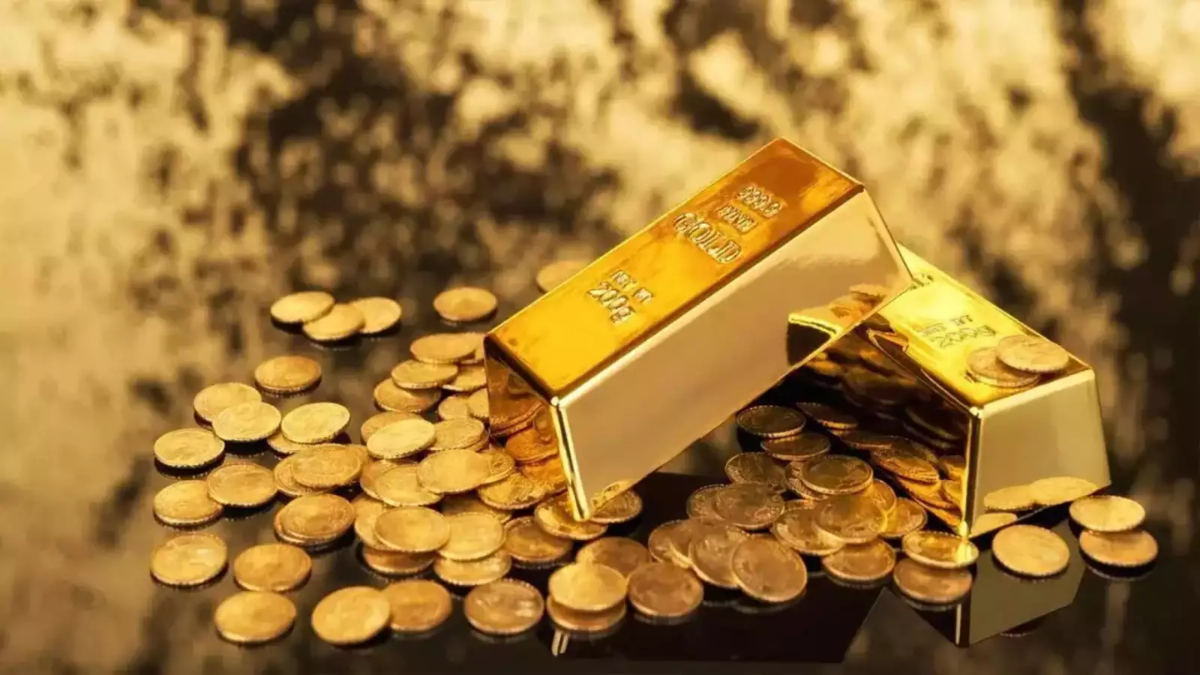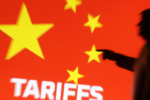Gold prices have remained steady, marking their eighth consecutive weekly gain as investors closely monitor U.S. President Donald Trump’s latest tariff policies. These policies have heightened fears of escalating trade wars and potential inflation, driving increased demand for gold as a safe-haven asset.
Gold Prices Near Record Highs
As of Friday, spot gold held its ground at $2,940.32 per ounce, maintaining proximity to the all-time high of $2,954.69 reached earlier in the week. This stability reflects a weekly increase of approximately 2%, continuing the precious metal’s upward trajectory.
Similarly, U.S. gold futures also remained unchanged at $2,956.10 per ounce, indicating consistent investor interest amid prevailing economic uncertainties.
Impact of Trump’s Tariff Policies
The surge in gold prices can be directly linked to President Trump’s recent tariff announcements. Earlier this month, the administration imposed a 10% tariff on Chinese imports and a 25% tariff on steel and aluminum. Additionally, there are plans to introduce tariffs on imported cars, semiconductors, pharmaceuticals, and lumber.
These aggressive trade policies have raised concerns about potential inflation and the possibility of a global trade war—factors that traditionally bolster gold’s appeal as a hedge against economic instability. Investors are increasingly seeking the security of gold as a store of value amid these uncertainties.
Federal Reserve’s Position on Inflation and Gold Prices
Officials from the U.S. Federal Reserve have expressed concerns about rising inflationary risks associated with the trade policies. Federal Reserve Governor Adriana Kugler stated:
“Going forward, I consider it appropriate to hold the federal funds rate in place for some time, given the balance of risks that we face right now.”
This statement suggests that the Federal Reserve may hold interest rates steady, considering the potential economic impact of the tariffs. If inflationary pressures continue to rise, investors may see even higher gold prices in the coming months.
Investor Sentiment and Market Dynamics
The steady increase in gold prices reflects a broader trend of investors seeking safe-haven assets amid geopolitical and economic uncertainties. Tariffs and potential retaliatory actions by trade partners contribute to market instability, prompting more investment in gold.
Additionally, the weakening of the U.S. dollar has further boosted gold’s appeal, making it more attractive to investors holding other currencies. Analysts suggest that if current trends continue, gold prices could soon test the $3,000 per ounce threshold.
Global Economic Implications of Tariff Disputes
The impact of U.S. tariff policies extends far beyond domestic markets, influencing global trade and economic outlooks. Countries affected by these tariffs may introduce countermeasures, leading to a cycle of retaliatory actions that could disrupt international commerce.
As uncertainty looms, gold’s role as a global store of value is becoming increasingly prominent. Central banks and investors worldwide are adjusting their portfolios, turning to gold to mitigate potential risks associated with the growing trade conflict.
What This Means for Gold Investors
For investors, the current environment presents both opportunities and challenges. The sustained rise in gold prices offers potential profits, but it also necessitates careful consideration of market volatility and the broader economic landscape.
Financial advisors recommend that investors assess their risk tolerance and portfolio diversification strategies. While gold remains a valuable component of a diversified investment approach, relying solely on one asset class is generally discouraged.
Will Gold Prices Continue to Rise?
Analysts predict that if trade tensions persist and inflation concerns grow, gold could see even higher prices in 2025. Factors influencing gold’s trajectory include:
- Inflation data: Higher inflation typically boosts gold demand.
- Interest rate decisions: Lower rates make gold more attractive.
- Geopolitical tensions: Continued trade disputes could push investors toward gold.
If President Trump expands tariffs or trade wars escalate, investors should prepare for further fluctuations in gold prices.
Conclusion
Gold’s steady rise amid Trump’s tariff policies highlights the metal’s enduring appeal as a safe-haven asset in times of economic uncertainty. As the situation unfolds, investors and policymakers will need to navigate the complex interplay of trade policies, inflation risks, and market reactions.
Staying informed and adopting a balanced investment approach will be crucial for managing risks and capitalizing on potential opportunities in the evolving economic landscape. As gold nears historic price levels, its role as a safeguard against market instability remains stronger than ever.
For more detailed coverage on gold price trends and market updates, visit Kitco News.
Disclaimer – Our team has carefully fact-checked this article to make sure it’s accurate and free from any misinformation. We’re dedicated to keeping our content honest and reliable for our readers.








